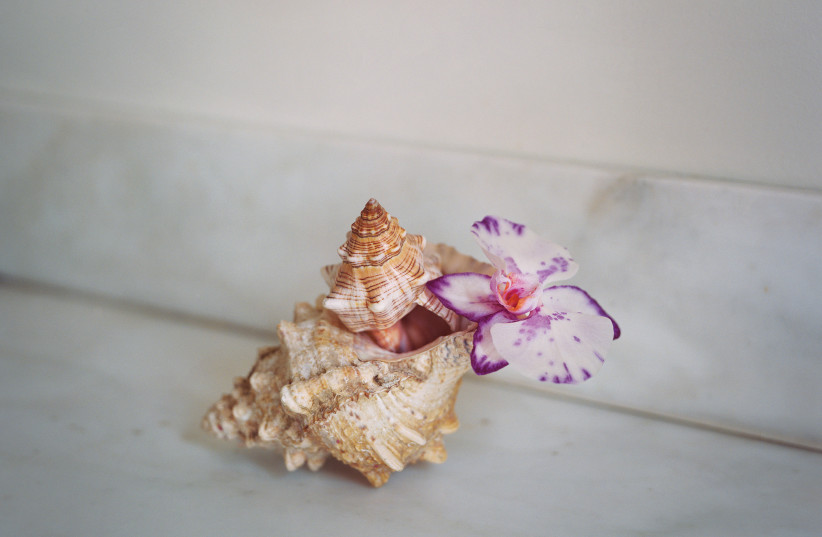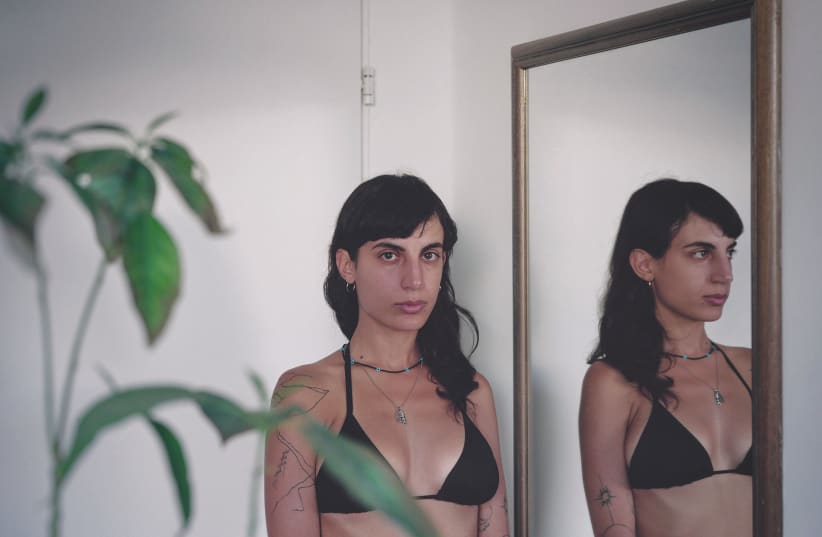In wildlife photography, an animal is captured against the backdrop of its natural habitat. Be it sand dunes, the tundra or a jungle, a creature’s natural context affords us a deeper understanding into its life. Therefore, it is fitting that David Adika chose to photograph the images in the exhibition Of David. A Psalm using an analog camera.
“I use a four-by-five inch film,” explains Adika. In addition to being one of the country’s most respected photographers, Adika, 52, is a veteran teacher and head of the Photography Department at the Bezalel Academy of Arts and Design. The meeting of practice and education can be felt in conversation with Adika, who has a clear and engaging way of communicating his art.
“I’m photographing with an animal camera; it’s wildlife photography. It’s very demanding. Nothing happens by mistake or by chance. It’s all very staged. All of the portraits are captured in private homes, intimate spaces of the subjects. It is a challenge for me to capture the reality and the moment through one portrait or a series or still life. For me, the portraits are a moment in time that allow me to say something about myself but also about society around me.”
In this exhibition, curated by Karmit Galili and currently running at the Israeli outpost of the Swedish museum Magasin III in Jaffa, Adika juxtaposes images of subjects with still life pieces.
Juxtaposing images of subjects with still life pieces
The former are all colleagues and former students of Adika’s, and fellow photographers such as Shlomi Elkabetz, Ann Simin and Yael Bartana. Their awareness of the form can be seen in their gaze and physicality, which adds a new dimension to the sharp aesthetics.


“PHOTOGRAPHING PHOTOGRAPHERS is part of the motivation,” he says. “The subjects know the manipulations that exist in photography that impact the photographer and the subject. If you photograph someone who isn’t from photography, they are less aware of the manipulation that photography brings.”
Each person is captured against the backdrop of his or her natural environs, which Adika feels tell the story of who they are. In fact, this exhibition is another step in Adika’s ongoing exploration of the concept of home. Growing up in Jerusalem in a Mizrahi family, Adika found scant representation in the art world of the culture he experienced in his home.
“I want to embed my home and my culture into culture,” he explains. “Homes are in the work. I photographed artifacts, souvenirs, objects in my home and others’ homes. I am speaking through home all the time. Every artifact or souvenir is like a conductor that tells your story, where your passion is, what your taste is. What you like, what you desire. Each object we collect is our memory; it also tells something about us. As such, it really interests me to see people photograph people in their homes. See what they have. If I was in New York, my subjects would be different, they would have different homes. There’s something in the humility, modesty in my subjects that speaks of the standing of myself and my friends. The background is very crucial. I used to photograph people on a white background, like Richard Avedon [did]. If you want to decontextualize something, you put it on a white background. Here I want to do the opposite.”
As this exhibition was commissioned by the gallery, Adika put a great deal of thought into how the images would be installed and how this would impact the viewer’s experience of them. “The whole installation emerged from the works themselves. The portraits are taken in the homes of the subjects and, as such, the space becomes an abstract apartment. The movement through the space should feel like walking through an apartment with 12 portraits; each one has its wall. There is an echo both of the space that they were taken in and something new that happens in the space that was built as another apartment. The colors of the walls were chosen based on the colors of the images. It’s my story and the story of each one of them. When you come to observe the exhibition, there is another narrative born from how you move through the space and commit the works to memory,” says Adika.
As for the title, Adika named the exhibition for a certain wording found in the Psalms of David. “Most of the psalms begin with ‘Of David.’ There are several psalms that begin with ‘To David a Psalm.’ When I came across it, I wondered why some begin one way or the other. When I started to read about it, I discovered that many researchers had already broached this subject. Psalms often deal with poetry and inspiration. There is a connection between inspiration and creation. The tension between the two is the motivation and key to the first reading of the works. In the exhibition, I take portraits of photographers who photograph people. One of the questions I have in my years as a photographer is: How do life and creation influence one another? How does the identity either of a creator or a person come to life as a product of their cultural background and childhood? What is between inspiration and creation? This exhibition is my reflection on photography.”
For Adika, the generosity of his subjects to open their homes and hearts to him became the inspiration, the creation and the psalm. “The fact that they are posing for me is their psalm for me, and it’s the psalm that gives me the inspiration. It charges me with energy and inspiration to photograph. Photography is for me a contemplation that is beyond. Even in its most embarrassing moments, it has truth and clarity.” ■
‘Of David. A Psalm’ will be on display at Magasin III through April 14. For more information, visit https://magasin3.com/he/jaffa/












